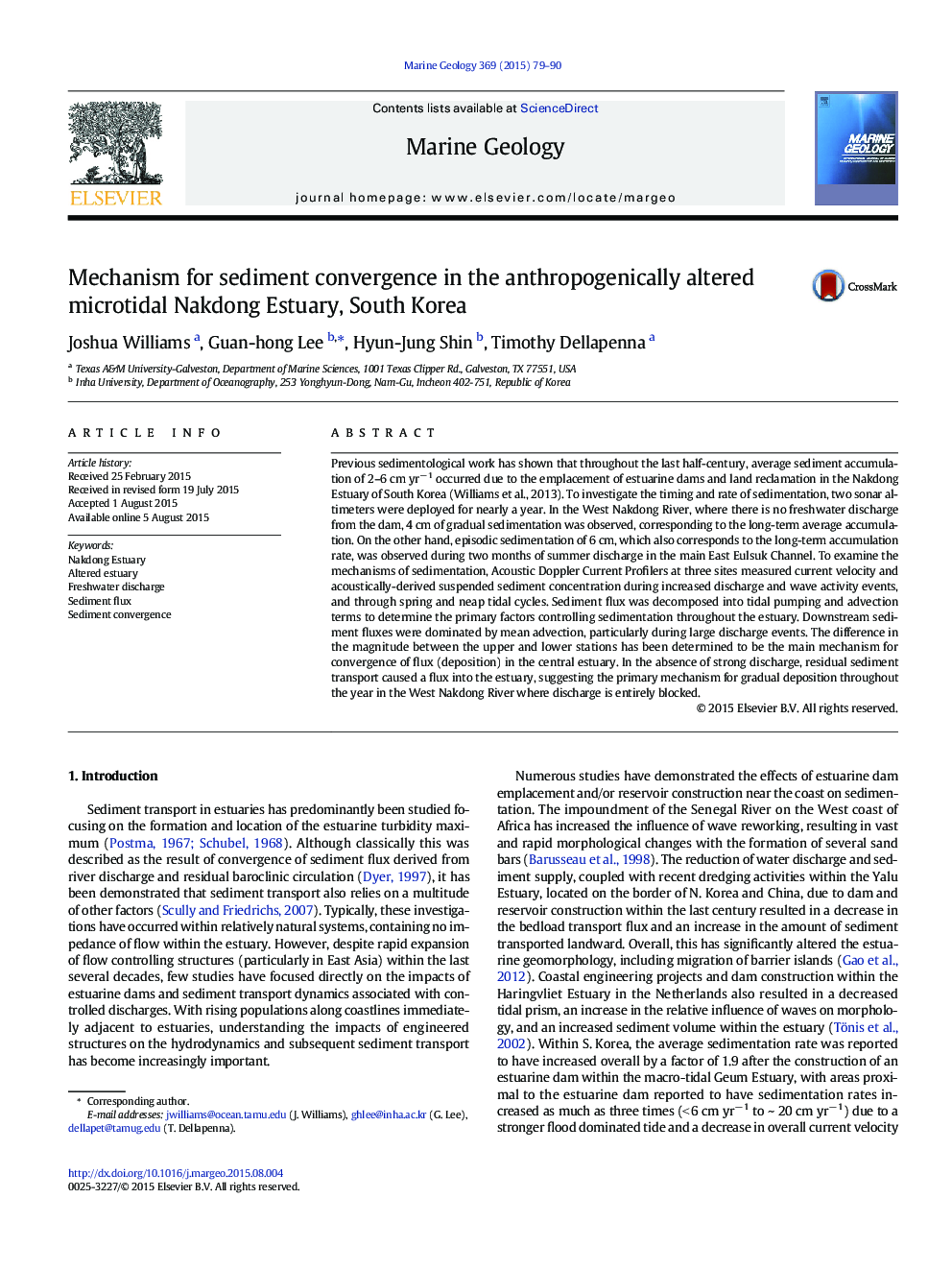| کد مقاله | کد نشریه | سال انتشار | مقاله انگلیسی | نسخه تمام متن |
|---|---|---|---|---|
| 4718177 | 1639083 | 2015 | 12 صفحه PDF | دانلود رایگان |

• Rate and timing of sedimentation were examined at the altered Nakdong Estuary of Korea.
• Altimeter observed episodic sedimentation of 6 cm during summer discharge in the main channel.
• Sediment flux gradient was the main mechanism for the deposition during high discharge.
• Gradual deposition of 4 cm also corresponds to the long-term rate in the west Nakdong.
• Wave-enhanced sediment flux was the primary mechanism for gradual deposition.
Previous sedimentological work has shown that throughout the last half-century, average sediment accumulation of 2–6 cm yr− 1 occurred due to the emplacement of estuarine dams and land reclamation in the Nakdong Estuary of South Korea (Williams et al., 2013). To investigate the timing and rate of sedimentation, two sonar altimeters were deployed for nearly a year. In the West Nakdong River, where there is no freshwater discharge from the dam, 4 cm of gradual sedimentation was observed, corresponding to the long-term average accumulation. On the other hand, episodic sedimentation of 6 cm, which also corresponds to the long-term accumulation rate, was observed during two months of summer discharge in the main East Eulsuk Channel. To examine the mechanisms of sedimentation, Acoustic Doppler Current Profilers at three sites measured current velocity and acoustically-derived suspended sediment concentration during increased discharge and wave activity events, and through spring and neap tidal cycles. Sediment flux was decomposed into tidal pumping and advection terms to determine the primary factors controlling sedimentation throughout the estuary. Downstream sediment fluxes were dominated by mean advection, particularly during large discharge events. The difference in the magnitude between the upper and lower stations has been determined to be the main mechanism for convergence of flux (deposition) in the central estuary. In the absence of strong discharge, residual sediment transport caused a flux into the estuary, suggesting the primary mechanism for gradual deposition throughout the year in the West Nakdong River where discharge is entirely blocked.
Journal: Marine Geology - Volume 369, 1 November 2015, Pages 79–90